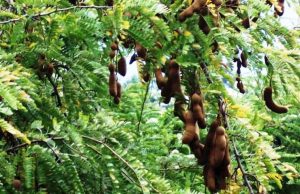Q’eswachaka is the last surviving example of an Inca suspension woven rope bridge in the Andes. It is made of natural fibres and built according to pre-Columbian techniques. Each June, four rural communities carry out an ancient tradition that stems back to the age of the Incan civilisation; they spend three days rebuilding the rope bridge.
The Incas were excellent engineers, their stonework is famous for its large stones which are fitted perfectly. They built the Qapac Ñan, the famous Inca road network, a major road system that was the spinal column of their empire. During this work, whose goal was the connection of all territories under their rule, the Incas developed amazing bridge-building skills. Bridges in fact were necessary to span gorges or to unite areas that were separated by rivers.
The Q’eswachaka bridge – which has been recognised as an intangible heritage of humanity by UNESCO – was hand-woven from ichu, a local tall thin grass that covers the mountainsides. The bridge could hold heavy loads and withstand the inclement weather conditions of the Andes. However, though it was made of resistant fibres, it deteriorated rapidly, and local communities had to reconstruct it every year.
This tradition has passed down through generations and still now, four Quechua communities, the Huinchiri, Chaupibanda, Quehue and the Choccayhua, gather at the Qeswachaka bridge, every June, for the rebuilding ceremony. After the mountain grass is harvested, it is left to macerate. Then, wet pieces of grass are first squeezed and rolled by using the palms of the hands, and are then braided and woven into strong cables and ropes.
Each family of the communities weaves the grass at home in order to contribute to building a 28 meters long by 1.20 meters wide bridge. The ropes forming the bridge are then attached to a pair of rock anchors on each side of the canyon, over the Apurímac River, with massive cables of woven grass linking these two pylons together.
On the day that precedes the grass harvest, the Andean priests, perform a complex ritual of offerings, consisting of coca leaves, corn and alcohol, which is directed at the ‘apus’ – the spirits of the mountains – in order to receive their protection over the bridge-building. The priests remain nearby, sitting around a burning fire, during the days the bridge is being built.
Thanks to its length and width, the road from Quehue, the nearest town, that leads to the bridge construction area, is particularly suitable for the ‘comuneros’, the people that build the bridge and that need room to measure and stretch the ropes to their full length and test their resistance. The construction of the bridge requires three days of work. On the first day, the ‘comuneros’ while they chew coca leaves, drink and joke, select the best pieces of material to make the six main ropes. These big cables serve as the floor of the bridge and as handrails.
On the second day of work, the old bridge, which is still hanging, is cut down with a machete and thrown into the river; it had become so deteriorated that only the bravest dared to cross it. The structure of the new bridge is built on the same day, while on the third and last day of work, the Andean engineer Victorian Arizpana Huahua, who learned the ancient bridge-building technique from his father, who in turn, inherited this Inca tradition from his, works with two teams of men. They tie pieces of wood to the cable floor. Finally, the floor is strewn with branches to give firm footing for beasts of burden, and branches and pieces of wood are strung to make walls along the entire length of the bridge.
The weavers, called in Quechua chakaruwaq, sway through the air, at 50 meters from the ground, with no safety harness, while they interweave the ropes provided by the communities. Finally, after several hours of weaving, a cry of joy is heard. The construction of the new bridge has been accomplished.
The Q’eswachaka bridge is considered a sacred expression of the communities’ bond with nature, tradition and history, and the annual renewal structures the life of the participating communities all year round, establishing communication, strengthening centuries-old bonds and reaffirming their cultural identity. On the day of the renewal, 7 June, a ceremony of gratitude is held in honour of the apus and the pachamama, mother earth. An Andean priest prays in Quechua and offers coca leaves, a llama fetus, coloured corn, cotton, sugar, wine, cigars and bells to the mountain spirits.






